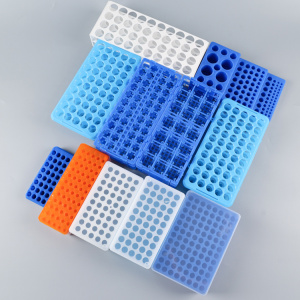What is the most efficient and accurate way to operate a pipette?
Pipettes are instruments used to pipette small amounts of liquids and are one of the common tools used in laboratories. It can be used to pipette water, buffer solutions, dilutions, strong acid and alkaline aqueous solutions, etc. There are several classifications of pipettes: single-headed and multi-headed, manual and electric. The three types of pipettes shown below are: manual single-channel pipettes, manual multi-channel pipettes, and electric pipettes.

Especially when pipetting viscous or easily volatile liquids, improper operation can easily result in large volume differences. Yongyue Medical reminds you that for viscous liquids or liquids with larger volumes, the pipette should be pre-wetted with liquid inside the tip first, so that the liquid can be left for a few more minutes when it is aspirated or discharged. The reverse pipetting method can be used: press to the second gear when absorbing liquid, gradually release the control button, press to the second gear when playing liquid, part of the liquid residue in the pipette tip.
Avoid the following operational errors.
1.Choose a pipette tip that matches the pipette model. When installing the pipette tip, avoid exerting too much force so that the pipette tip cannot be dislodged.
2.Choose the right type of pipette according to the volume of liquid to be pipetted to improve efficiency and pipetting accuracy; when using adjustable pipettes, adjust the pipetting volume by rotating the scale to exceed the set volume depending on the size of the volume and then adjusting back to the set volume to ensure the best accuracy of pipetting.
3.The pipette should be used vertically to avoid skewing the pipette itself and causing pipetting deviations.
4.The pipette should be slowly absorbed and slowly released, so that bubbles are generated when the liquid is absorbed too quickly and the liquid is immersed inside the pipette, causing corrosion of the components.
5, to ensure that the pipette, the tip and the liquid to be pipetted are at the same temperature when used.
6.Don't put the pipette directly on the bench or place it randomly, especially when there is liquid left in the pipette tip, the pipette should be hung on a special pipette rack.
7.After using the pipette, press the tip pusher downward with your thumb and adjust its capacity to the maximum value of the logo after safely withdrawing the tip, then hang the pipette on a special pipette rack. Pipettes should be placed in a special box when not in use for a long time.
8. Check the pipette before use. In particular, check whether there is any liquid leakage. How to check: Place the pipette vertically in the air for a few seconds after aspirating the liquid and see if the liquid level drops. If liquid leakage is found, check whether the pipette tip is matched and whether the pipette spring piston is normal.
9.After removing the acid or corrosive vapor solution from the pipette, remove the sleeve and clean the piston and seal with distilled water; do not lubricate the piston and seal with grease, etc.
10.The pipettes that have been disassembled and cleaned or not used for a long time need to be calibrated before using again.
——



